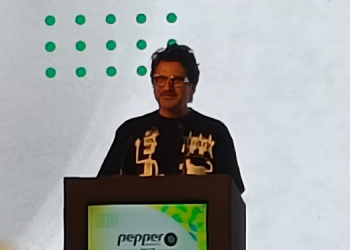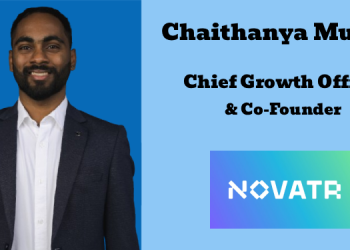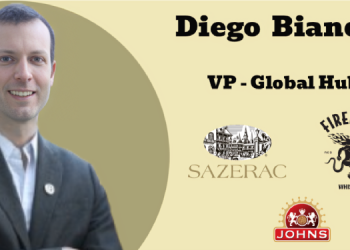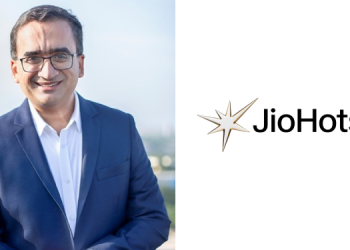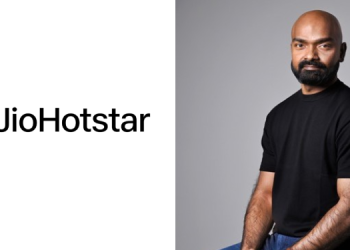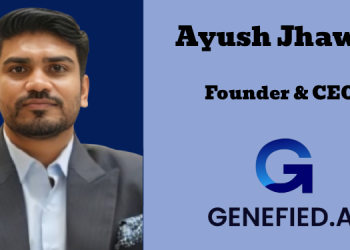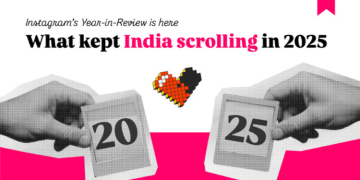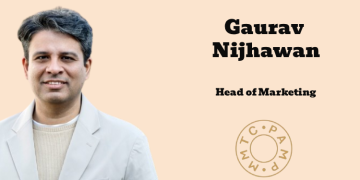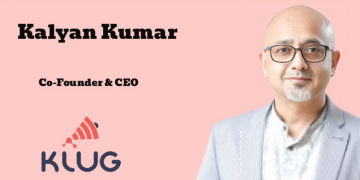Tonic Worldwide – a digital-first creative agency was earlier this year recognised at The Shorty Impact Awards 2024. It won three awards for its non-profit campaign with Smile Train.
This initiative focussed on creating the first cleft-inclusive image repository on Shutterstock, setting a new benchmark for representation of women with clefts, in visual communication.
MediaNews4U.com caught up with Chetan Asher, founder, CEO Tonic Worldwide.
Q. What growth has happened in the depth and breadth of the client roster? Out of the client roster is a large percentage of long term relationships that go back many years?
We’ve experienced notable growth in both client acquisition and retention. A significant portion of our client relationships extends over several years, which reflects the trust and confidence our partner brands place in us as contributors to their growth journeys. While some client churn is natural in this industry, we are proud to maintain positive relationships even as we occasionally disengage from a business standpoint.
This year, we expanded within existing categories like F&B, FMCG, and BFSI while also entering new sectors such as automotive, healthcare, and home furnishings, among others. Many of these new partnerships were driven by our specialised offerings in areas like SEO, web development, and video production, alongside integrated mandates. It’s particularly rewarding to have won prestigious new accounts through highly competitive selection processes, which underscores the value and expertise we bring to the table.

Q. Tonic Worldwide started in 2007 when digital was at a nascent stage. How has that helped it stay ahead of the curve over the years?
Since we started when digital was at a nascent stage, we learnt to spot trends early on and adapt accordingly. We also built a learning mindset and that’s now embedded in our DNA. We saw many agencies chase every new platform or tool, but we focussed on understanding why people were adopting these technologies. This human-first approach has helped us stay ahead. I often tell the team that it’s the “years of curiosity” that defines us and is our advantage.
Q. Could you shed light on work done in 2024 with clients like LT Foods, Adani Realty that stands out? How are advances in AR and VR helping?
I think we have done some phenomenal work across all our verticals, benefiting brands across multiple categories, not just FMCG. On the integrated campaign front, we introduced Bingo! Korean 2X Spicy Chips to Gen Z consumers, and helped Bonkaso, a D2C home improvement brand, find a place in Indian households.
With performance marketing and SEO, we produced outstanding results for Greenply, Dolby, Dusoul, and Motul, among others. Our video team set new milestones in storytelling with projects for Bureau, Odonil, and ITC, while we wrapped up highly ambitious web initiatives for Greenply, Motul, Aditya Birla Group, and CMC Vellore.
For LT Foods and Badshah, we are driving active consumer engagement with relatable content and value-added innovations. I must also mention the immense buzz, impact, and accolades generated by our Cleft awareness campaign, which involved creating the world’s first cleft-inclusive image library in partnership with Smile Train.
We remain open to embracing new and emerging technologies in our ideation and campaigns, but only when they genuinely add consumer delight and enhance brand value. We avoid force-fitting technology solutions just because they are trending.
Regarding AR and VR, these technologies have enormous potential to create immersive experiences and significantly benefit retail, fashion, and online shopping. I hope to see great use-cases emerge as hardware becomes more accessible and these technologies advance further.
Q. During the festive season what trends were seen in terms of brands tactics in the digital realm to stand out in a competitive and cluttered market?
The festive season brings heightened brand share-of-voice, making consumer attention even more elusive.
I’ve observed three key approaches that brands largely adopted this year: leveraging technology, forging collaborations, and adopting a content-first strategy. A review of recent festive campaigns will show the presence of at least one—or a combination—of these themes as a dominant factor.
Q. How does the agency adapt AI across different sectors like FMCG?
I think AI, not just for FMCG, can be both a marketer’s friend and a consumer ally. It represents a much bigger opportunity than merely writing copy, generating images, or automating mundane tasks. While many businesses are excited about its potential, few are using it in truly meaningful ways.
I see possibilities for adopting AI and generative AI across several aspects of brand building and marketing: product innovation, insight generation, concept testing, audience segmentation and targeting, media allocation, creative optimisation, and customer experience. Applying AI in these areas can help answer significant business questions and create substantial value.

Q. At the same time is the human element in creativity still vital because one criticism of AI is that it lacks empathy? It looks at things in a cold, calculated manner.
AI is game changing, but it fundamentally lacks what makes human creativity special – the ability to draw from experiences, cultural nuances, and emotional intelligence. What a creative perspective that an individual can bring, AI can never replicate that. But AI can be a great ally in aiding with data, research and trends that can be applied, at scale.
Q. From a P&L perspective did the challenge of margins getting squeezed grow in 2024? We saw Wieden+Kennedy shut shop in India.
There’s margin pressure across the industry and a combination of factors driving that. Looking ahead to 2025, we expect margins to stabilise and also expect clients investing in long term initiatives.
Q. Could you shed light on the role that various divisions like GIPSI, Yellow Labs and Tonic Worldwide Intuitive Programming (TWIP) play in driving business outcomes for clients?
Technology can be a great enabler for creativity and act as a force multiplier. We established specialised creative tech divisions like ‘GIPSI’, ‘Yellow Labs’ and ‘TWIP’ well before tech-led experiences became mainstream. Our work for brands like Aditya Birla Group (Magic AI Mirror, hologram innovation) and MTV (Turn on the Woofer), helmed by Yellow Labs, stands as a testament to breakthrough tech and personalisation that turbocharge customer experiences and embed brands deeply into consumers’ memory structures.
TWIP has been part of our tech suite and has enabled brands across BFSI, B2B, and B2C sectors to achieve mass personalization at scale.
Insights remain at the core of building effective campaigns and GIPSI brings in the potent combination of Human+Artificial intelligence to not just mine, beyond the surface, insights but also spotting trends ahead of the curve – just when they are mere undercurrents. I won’t cite names, considering the classified nature of the projects that GIPSI undertakes but I will refer to a few that not just added impact but shaped successful strategies for respective brands:
1. We helped one of the leading IPL franchise expand their fan base by uncovering their conditional and unconditional fans
2. A legacy brand discovered the sweet spot to position itself as a new age digital shop, basis our guidance.
3. Our trend spotting research helped an international lingerie brand discover the opportunity to convert the wedding season into an always-on trend.
All three of these divisions, have been direct or indirect influencers of business outcomes for our partner brands. We continue to invest actively in them and broaden the range of their offerings, to stay aligned with the evolving landscape

Q. Could you talk about the plans to set up a division dedicated to sustainability in the near future? Are clients increasingly becoming mindful about sustainability and if so why?
Yes, sustainability will remain a core focus for brands, especially as Gen Z and younger demographics place a strong emphasis on environmental consciousness in their consumption habits. Consumers are willing to take action and they expect brands to step up, too. Consequently, brands will have to take active, tangible steps in that direction rather than just offering lip service.
We had to prioritise certain other service rollouts this year over the sustainability division. However, we continue to work behind the scenes and remain committed to realizing this vision soon.
Q. Since there is a lot of noise online it can be hard to hold Gen Z’s attention. What tactics work in this regard? How important is authenticity?
Gen Z is undoubtedly a crucial demographic that no marketer can afford to overlook. However, many still tend to view them only through the lens of their tech-savviness and the vibrant lifestyles they showcase online. It’s essential to understand their desire for individuality, acknowledge their anxieties, and support their quest for self-expression.
Authenticity is an extremely vital ingredient. Brands should relate to Gen Z with messages that feel relevant and real, valuing their freedom, independence, sense of companionship, and strong social conscience. At the same time, it’s important to acknowledge their fears, as well as their feelings of loneliness and isolation despite their digital connections.

Gen Z cares about friends, family, fitness, food, travel, experiences, and gaming. By using these interests as a contextual entry point, marketers can more effectively connect with and engage them.


